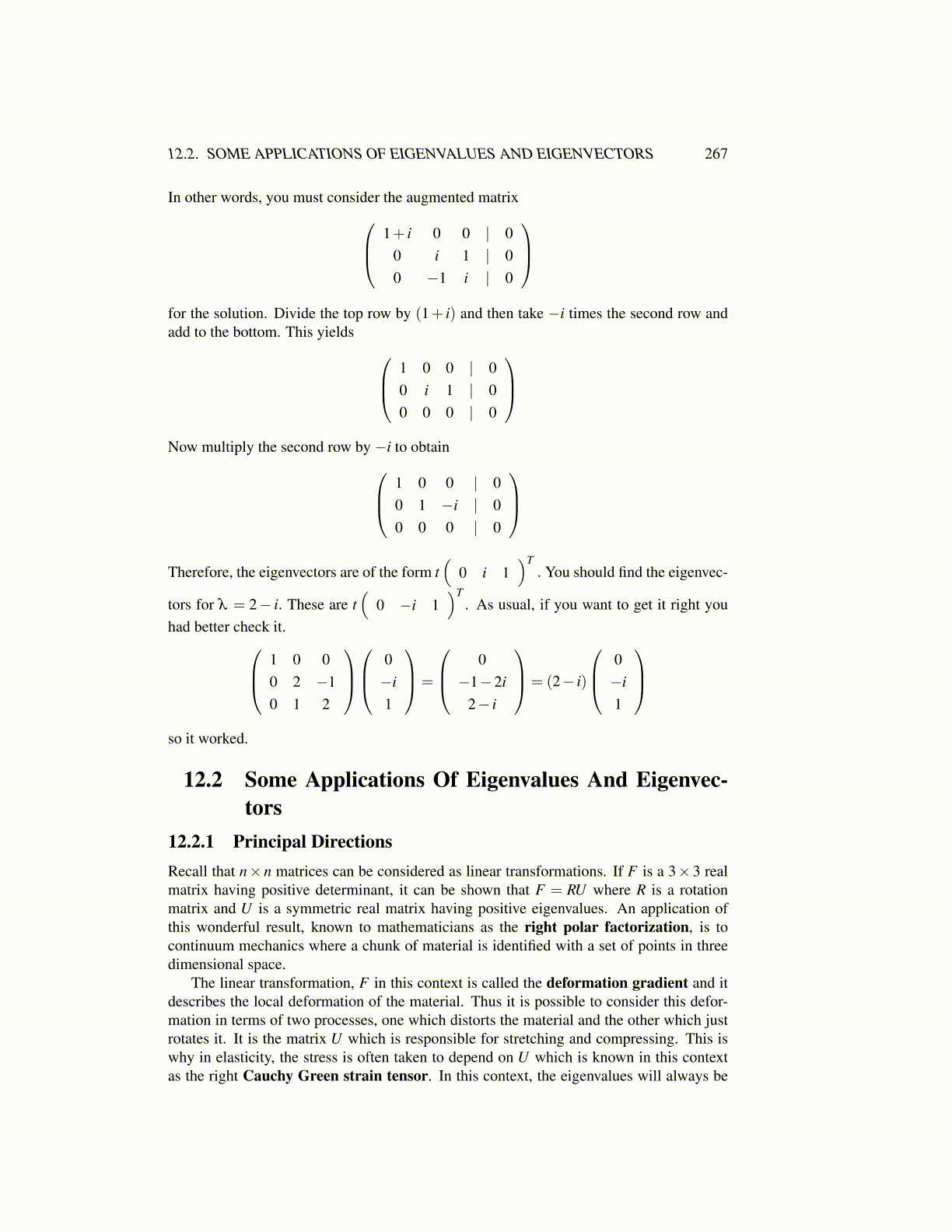
12.2. SOME APPLICATIONS OF EIGENVALUES AND EIGENVECTORS 267
In other words, you must consider the augmented matrix 1+ i 0 0 | 00 i 1 | 00 −1 i | 0
for the solution. Divide the top row by (1+ i) and then take −i times the second row andadd to the bottom. This yields 1 0 0 | 0
0 i 1 | 00 0 0 | 0
Now multiply the second row by −i to obtain 1 0 0 | 0
0 1 −i | 00 0 0 | 0
Therefore, the eigenvectors are of the form t
(0 i 1
)T. You should find the eigenvec-
tors for λ = 2− i. These are t(
0 −i 1)T
. As usual, if you want to get it right youhad better check it. 1 0 0
0 2 −10 1 2
0−i1
=
0−1−2i
2− i
= (2− i)
0−i1
so it worked.
12.2 Some Applications Of Eigenvalues And Eigenvec-tors
12.2.1 Principal DirectionsRecall that n×n matrices can be considered as linear transformations. If F is a 3×3 realmatrix having positive determinant, it can be shown that F = RU where R is a rotationmatrix and U is a symmetric real matrix having positive eigenvalues. An application ofthis wonderful result, known to mathematicians as the right polar factorization, is tocontinuum mechanics where a chunk of material is identified with a set of points in threedimensional space.
The linear transformation, F in this context is called the deformation gradient and itdescribes the local deformation of the material. Thus it is possible to consider this defor-mation in terms of two processes, one which distorts the material and the other which justrotates it. It is the matrix U which is responsible for stretching and compressing. This iswhy in elasticity, the stress is often taken to depend on U which is known in this contextas the right Cauchy Green strain tensor. In this context, the eigenvalues will always be